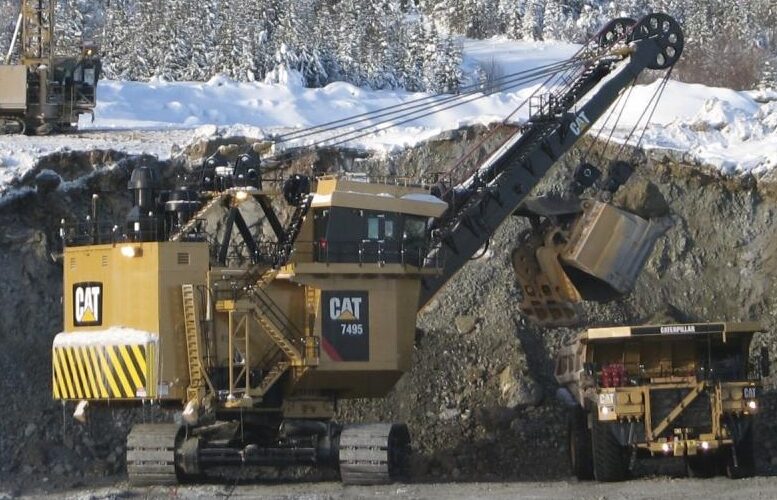The year was 1893, a time when only 44 of the present-day 50 states had united, and Grover Cleveland had assumed office as the nation’s 24th president. College basketball was taking its first steps, hosting its inaugural official game. Meanwhile, the Bucyrus Steam Shovel and Dredge Company inaugurated a new manufacturing plant in South Milwaukee, Wisconsin, aimed at enhancing and enlarging its production capabilities.
From that juncture in history onward, the managerial choices and machinery manufactured in South Milwaukee have not only revolutionized the construction and mining sectors but have also left an indelible mark on the course of history.
During the early 1900s, the equipment manufactured by Bucyrus played a pivotal role in the extensive excavation endeavors of that era.
“Dredges were instrumental during the California gold rush, and shovels played a crucial role in the extensive Mesabi Iron Ranges operations,” noted Shawn Paap, Commercial Manager of Cat electric rope shovels (ERS). “Bucyrus dredges were employed in the significant New York State barge canal enlargement project, which marked the largest earthmoving project in the United States between 1902 and 1912.”
The company’s steam-powered shovels, weighing between 40 to 50 tons, played a pivotal role in the construction of the Panama Canal, a project of monumental historical significance. Throughout the duration of this endeavor, a total of 77 shovels, all manufactured in South Milwaukee, were employed in the canal’s construction. When considering the shovels produced by the Marion Steam Shovel Company, a heritage company of Bucyrus, it’s noteworthy that 101 out of the 102 shovels used in the project hailed from Bucyrus.
During World War II, there was an unparalleled need for excavators in Europe, leading to nearly the entire production output of the company being dedicated to the war effort from 1942 to 1945. Following the war, the company initiated a $2 million project aimed at boosting plant capacity by 20 percent.
In the midst of the 20th century, Bucyrus had evolved into a worldwide corporation, boasting an extended range of products. At this point, an impressive tally of over 74,000 Bucyrus machines had been manufactured and put into operation across a staggering 166 countries.
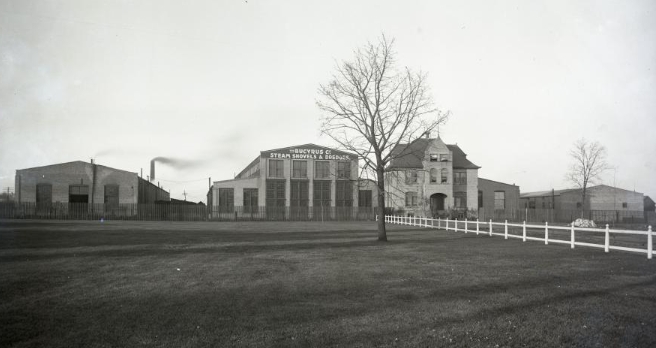
Important Innovations
A central aspect of the strategy for relocating production to South Milwaukee was the enhancement of manufacturing efficiency for its primary heavy machinery, including rope shovels and draglines. Over the past 130 years, this facility has seen the production of over 32,000 machines, and presently, it continues to manufacture substantial Cat electric rope shovels.
The lineage of the current Cat 7495 and 7495HF models, which are employed in the mining sector, traces back to their origins as railroad shovels. From 1882 to 1930, over 1,850 railroad shovels were manufactured. The initial iterations were not mobile in the contemporary sense; instead, they relied on being pushed along rails or rollers. This manual method of relocating these immense machines fell short of meeting the efficiency demands of mining operations.
A sequence of pioneering advancements that originated from the South Milwaukee facility played a pivotal role in enhancing the efficiency and robustness of rope shovels. Drawing inspiration from Caterpillar’s 1920s technology, the steam-powered shovels adopted rotating belts with track-style features, greatly enhancing their maneuverability. Up until the 1930s, the entire structure of rope shovels was riveted together, but this approach was later replaced with welds to enhance overall durability.
A significant transformation for both rope shovels and the industry at large was the transition from steam power to electricity. Bucyrus played a pioneering role in adopting electricity as a power source over a century ago, as early as 1917. The introduction of a novel DC electrical power system in 1919 marked the initial stages of the modern ERS (Electric Rope Shovel) design we know today, culminating in the complete transition from steam power to electricity by 1939.
“As the contemporary mining industry intensifies its commitment to equipment electrification in order to mitigate carbon emissions and enhance efficiency, Caterpillar takes pride in its pioneering role in electrifying products for several decades,” remarked Caterpillar Product Value Stream Manager Flor Rivas.
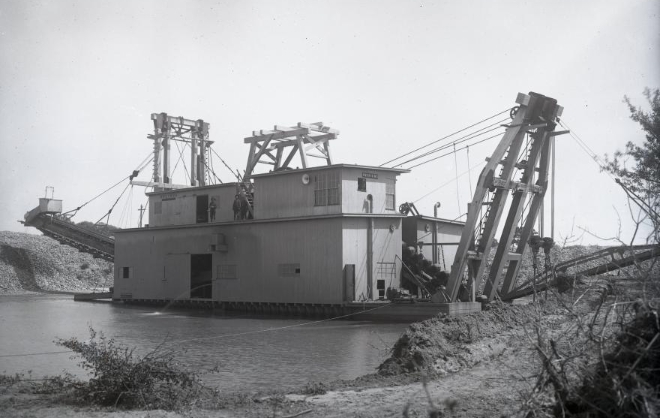
This shift in machine design, from the basic DC drive system to the more streamlined AC electric motors, constituted a groundbreaking development for both Bucyrus and the broader industry.
According to Mike Haws, the technical steward of Cat electric rope shovels, AC drive motors outshone their DC counterparts in various ways. They proved to be more straightforward, had extended lifespans, demanded less maintenance, operated at higher speeds, and exhibited superior efficiency and power delivery.
The introduction of insulated gate bipolar transistor (IGBT) fuseless technology marked a significant step in the progression toward digital gate turnoff (GTO) systems. Furthermore, a collaboration with Siemens during the 1970s propelled Bucyrus to the forefront of AC drive technology, elevating drive system availability to an impressive 99 percent.
Caterpillar Continues Rich History
Following Caterpillar’s acquisition of the Bucyrus product line in 2011, the already exceptional Electric Rope Shovel (ERS) product has seen substantial enhancements in safety, productivity, and reliability. These improvements include heightened safety features, improved accessibility and maintenance, enhanced performance in demanding conditions, seamless technology integration, and increased availability, as noted by the company.
Following the acquisition, Caterpillar promptly introduced a liquid-cooled motion regulator cabinet to enhance the efficient dissipation of heat produced by electrical components. This advancement extended the global product’s ability to operate reliably in extreme temperature ranges, spanning from -40°F to 120°F, and at elevations reaching up to 17,220 ft. without any reduction in performance. Additionally, the company introduced a swifter propel transfer switch, significantly reducing lag time by 70 percent and thereby enhancing overall productivity.
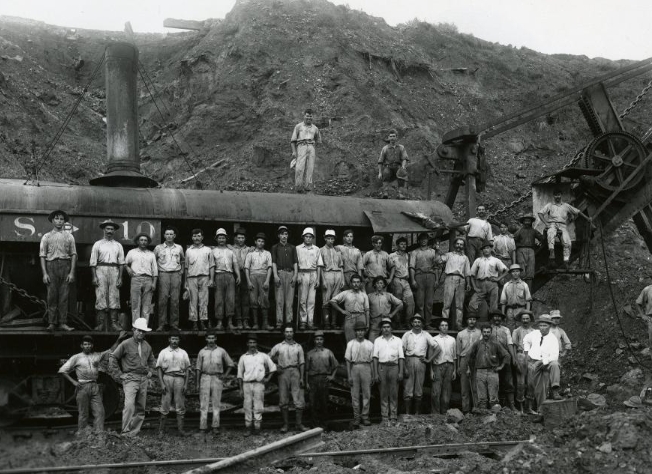
Through in-depth analysis of operator behaviors across diverse skill levels, Caterpillar unveiled its inaugural technology enhancement package for the Cat 7495 series shovels in 2016, known as Operator Assist – Enhanced Motion Control (EMC). This breakthrough introduced safeguards for the machinery and streamlined operations, resulting in increased longevity and enhanced productivity.
The software implemented protective measures for the dipper, automatically restricting swing forces when the operator endeavored to swing it through the bank. It also provided safeguards for the crowd ropes and brake, effectively averting boom jacking scenarios to enhance machine cycle durations and overall productivity.
Presently, a multitude of ERS technologies aimed at enhancing efficiency and reducing expenses are being introduced at an accelerated rate. In the current year, Caterpillar unveiled two novel technology packages designed for ERS models — the Integrated Technology Package (ITP) and Operator Assist Package (OA).
By obviating the necessity for supplementary in-cab displays typically associated with individualized tech packages, ITP and its constituent modules serve as the cornerstone for the deployment of both existing and forthcoming technologies. Furthermore, it facilitates effortless integration and expedites the installation process of Cat MineStar Solutions’ operational technologies, which are instrumental in the monitoring, tracking, and management of the shovel’s operations.
OA provides heightened machine protection and operational simplicity with its inclusion of a LiDAR vision system, akin to the technology employed in autonomous mining trucks. This system scans the front of the shovel, effectively preventing unintended collisions between the dipper and the machinery.
Cat ERS Models — Moving Mountains
Following the acquisition, Caterpillar has manufactured over 200 ERS models with a remarkable 134.4-ton capacity at the South Milwaukee facility. These machines were initially produced under the Bucyrus brand and are now proudly carrying the Caterpillar name.
The Cat 7495 shovel is known for its average lifespan of 20 years, with these machines operating in some of the most challenging conditions worldwide. They excel in a wide range of environments, from the freezing cold oil sands of Canada to the dry and arid deserts of Chile, where the average annual rainfall is less than 1.0 inch.
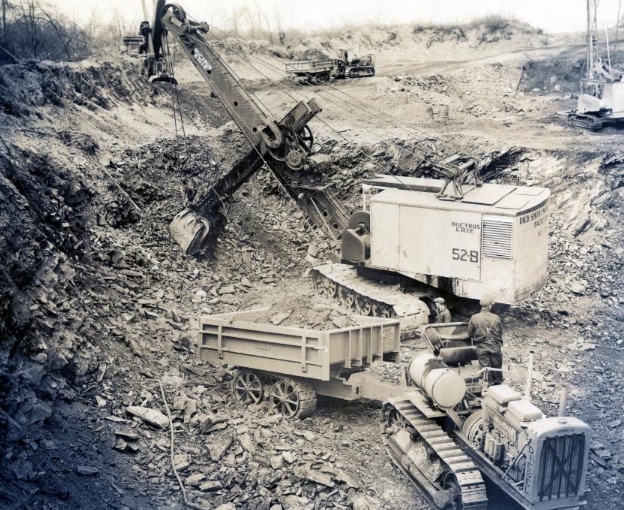
Between 1990 and 2022, approximately 237 machines, comprising both the Bucyrus 495 and Cat 7495 series, have successfully transported over 116 billion tons of material. If this massive volume were carried by the 400-ton Cat 797 mining truck, it would have necessitated a staggering 290.1 million truckloads and would have taken more than 13.9 million hours to accomplish, assuming a cycle time of 2.88 minutes and truck spotting periods.
Jeremy Niedens, the facility manager for Caterpillar in South Milwaukee, expressed pride in the extensive legacy of their presence in South Milwaukee. He acknowledged the substantial influence of the machinery produced at this site on the worldwide market over the past 130 years. Niedens also commended the highly skilled and dedicated team that upholds the tradition of excellence in the production and support of Cat electric rope shovels and draglines.

